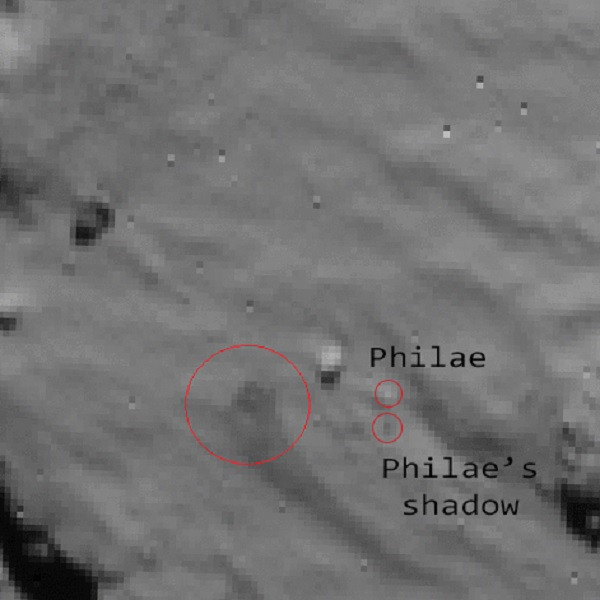Rosetta Mission Test Results Expected as First Images of Philae Comet Landing Released

The first images of Philae landing on comet 67P have been released by the European Space Agency, showing a cloud of dust being kicked up when the lander first touched down on the surface.
It took three attempts for Philae to land successfully on the comet. In its first attempt, the lander bounced a kilometre into the air.
When it was eventually stable on the surface, it was a few hundred metres from the intended landing site – and scientists were not entirely sure of its location.
.@philae2014 + his shadow visible in my NAVCAM images from first touchdown! http://t.co/sFgzM3xa1f #CometLanding http://t.co/ZS3yrpA1VW
— ESA Rosetta Mission (@ESA_Rosetta) November 16, 2014Posting the images of the Rosetta blog, the ESA said: "Once we had convinced ourselves that the dark 'splotch' seen in the second of the images was almost certainly the tell-tale signature of Philae's precise first touch-down and bounce, we put them out.
"However, some careful work by a number of people in ESA's Flight Dynamics team and by followers of our Rosetta blog has shown that these NAVCAM images show more, namely Philae itself, just after the bounce!
"It appears as a couple of brighter pixels closely accompanied by its shadow in the form of a couple of darker ones just below, both to the right of the diffuse dust cloud shadow."
My #lifeonacomet has just begun @ESA_Rosetta. I'll tell you more about my new home, comet #67P soon… zzzzz #CometLanding
— Philae Lander (@Philae2014) November 15, 2014The images come as scientists await the first results from Philae's initial experiments on the comet surface, two days after Philae's batteries ran out – forcing it into hibernation for the foreseeable future.
Philae sent the data to the ESA before it shut down and scientists will release their first evaluation of the results later today, spokesman Andreas Schuetz told The Associated Press.
Results will include information about the sample taken from 25cm beneath the comet surface, which has remained unchanged for about 4.5 billion years, providing a time capsule that could help our understanding of how life on Earth began.
© Copyright IBTimes 2025. All rights reserved.






















